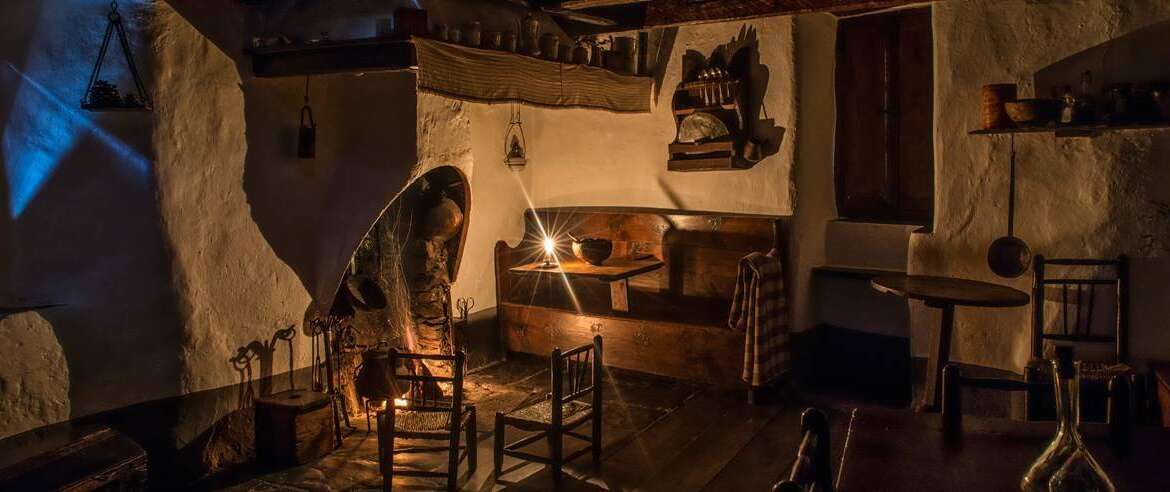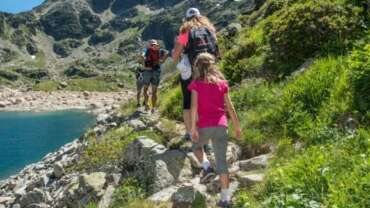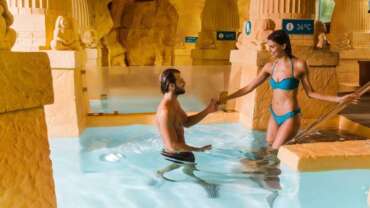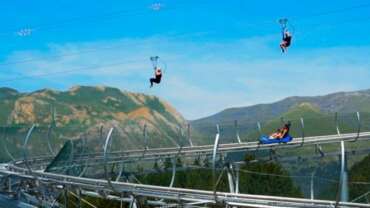RURAL HABITAT CIRCUIT
The Rural Habitat route is an interesting way to learn more about the customs and way of life of the people of Andorra until the early 20th century. It’s made up of three historic house-museums where you can tour all the rooms, from the kitchen to the bedroom, and other family and work rooms. This ethnographic route represents an original way to learn about the history of the country and explore the social differences of Andorra’s past. This page offers the most relevant data on the three historic house-museums included on the route. All of them offer guided tours in different languages, so all our visitors can travel back in time and really get into the customs of the families that lived there.
Casa Areny-Plandolit, a country house of the high society
Casa Areny-Plandolit, an estate located in Ordino, reveals what life was like for a high-society family in the late 18th century and early 19th century in Andorra. Its owners belonged to an illustrious family in the Principality, who were linked to politics and were the owners of one of the most important forges in the country at the time. You can see this in the rich diversity of furniture and rooms, where you’ll quickly spot an office desk. You can access the virtual tour on Google Maps to get an idea of what this house-museum is like, or visit the Principality of Andorra Culture website to download a PDF leaflet and learn more about visiting it.
Casa Rull, home to a family of farmers with land
Casa Rull is in the picturesque village of Sispony in the parish of La Massana. It’s a beautiful example of a country house, as it belonged to the Perich family, who owned land in Andorra, allowing them to build a large house with some spectacular views.
It has some large rooms on the upper floors, while the ground floor was dedicated to farm work. Its wealth of tools gives you an idea of what farm life was like back then. That’s why it became one of the most important houses in the parish. Now you can also visit it virtually on Google. The Principality Culture website offers more information.
Casa Cristo, an example of a humble country house
Casa Cristo, meanwhile, is an interesting place to learn about the countryside where the humblest in Andorran society lived in the past. Located in Encamp, in the heart of the village, it’s well adapted to the limited space they had available on their land. It belonged to a family of landless labourers, as you can tell from their tools and the smaller, cosier spaces inside the house. It was inhabited until 1947 and is built around a fireplace that the family would gather around. You’ll find more information on the Encamp website, along with contact details to visit this country home, where you’ll find the essence of rural life in Andorra is still preserved.
ROMANESQUE ART
The geographic location of the country has favoured the conservation of more than 40 churches and monuments in the Romanesque style, distributed throughout the territory.
Romanesque monuments and churches
Andorran Pre-Romanesque and Romanesque art have preserved their essence, their simplicity and their beauty since the 11th and 12th centuries. The artistic manifestations of this architectural style in Andorra stand out for their sobriety, the reduced size of the buildings and their perfect integration into the typical Andorran mountain landscapes.
The Romanesque churches of the Principality, all built following a very simple construction layout, are small in size, very poorly decorated and have a single nave, an apse and a porch at the entrance. One of the key identifying features of these temples in the Principality are their bell towers or belfries, used as a method of communication between people as well as a defensive element against attacks, among others.
As for the interior, it features paintings with a rich chromatic range praising the divinity. Most of these are works of the disciples of the great Catalan Masters of yesteryear.
Finally, it is worth pointing out that many of these temples still have Baroque altarpieces from the 17th and 18th centuries.
Visiting some of these churches will bring you closer to the lives of the inhabitants of the valleys, where in the past they were the centre of religious and social life, and which today are some of the jewels of our culture.
There is also the Espai Columba, a cultural setting which will show you the significance and origin of the Romanesque style in Andorra, it legacy and most importantly, the interpretation of the murals of the Andorran churches. If you decide to visit, we encourage you to visit the Romanesque Church of Santa Coloma located a short distance away, where you will enjoy the videomapping that recreates the fresco conserved at the Espai Columba, but in its original setting.
ANDORRA BUS TOUR: DISCOVER ENCHANTING PLACES!
The Andorra Bus Tour is probably the most comfortable way of discovering the main places of interest in our country. The 7 itineraries on offer cover all of the parishes of the Principality with different central themes: Romanesque art, traditions, trades, etc. And of course, they all have one thing in common – the scenery – as uniquely beautiful panoramic views and landscapes are hidden in every corner of Andorra. Here we explain everything you need to know before getting on the bus: validity periods, routes, types of ticket and other practical information.
In addition, on all the itineraries you will always be accompanied by a tourist guide who will explain all the details and peculiarities of the route! You will also be provided with an audio guide device to learn more, available in 4 languages for you to choose from: Catalan, Spanish, French and English.
Where and when to get the Andorra Bus Tour
This transport operates from 1 July to 30 September. During this period, departures are every day of the week, including Saturdays and Sundays, and each day has a different itinerary.
All itineraries take half a day and take place in the mornings, with the exception of Saturdays, when the itinerary runs until 5 pm and includes lunch.
ANDORRA PASSMUSEU
PassMuseu is an interesting, easy and money-saving way to discover Andorra’s museums. The price of the Passport is 2.5 €. It gives you 50% off on the 3 museum admissions of your choice out of the 19 available.
The PassMuseu also includes a brief description of all the available museums in Andorra.
Present the passport at the museum ticket office in order to avail of the discount. Remember, each passport is personal and non-transferable and each coupon is valid for a particular museum. Each museum will stamp your passport in validation.
The PassMuseu is valid for a period of one year from the purchase date and is only valid for listed museums. We recommend prior reservation for all museums.
The Andorra PASSMUSEU can be used to visit 19 of the country’s museums:
National Automobile Museum
Casa Cristo Ethnographic Museum
Holy Art Museum
Electricity Museum
Cal Pal Mill and Saw Works
La Cortinada Nature Centre
Casa d’Areny-Plandolit Museum
Postal Museum
Miniature Museum
Casa Rull Museum
La Farga Rossell forge – Interpretation Centre
Comic Museum – Joan Pieras
Reig Factory Museum
Perfume Museum
Escaldes-Engordany Art Centre
Casa de la Vall
Thyssen Museum in Andorra
Espai Columba
Cal Pal social and cultural space
Keep in mind…
The Carmen Thyssen Museum Andorra has a reduced price ticket of €5 and children under 18 enter free. Also remember that children under 10 get free entry to all museums.








